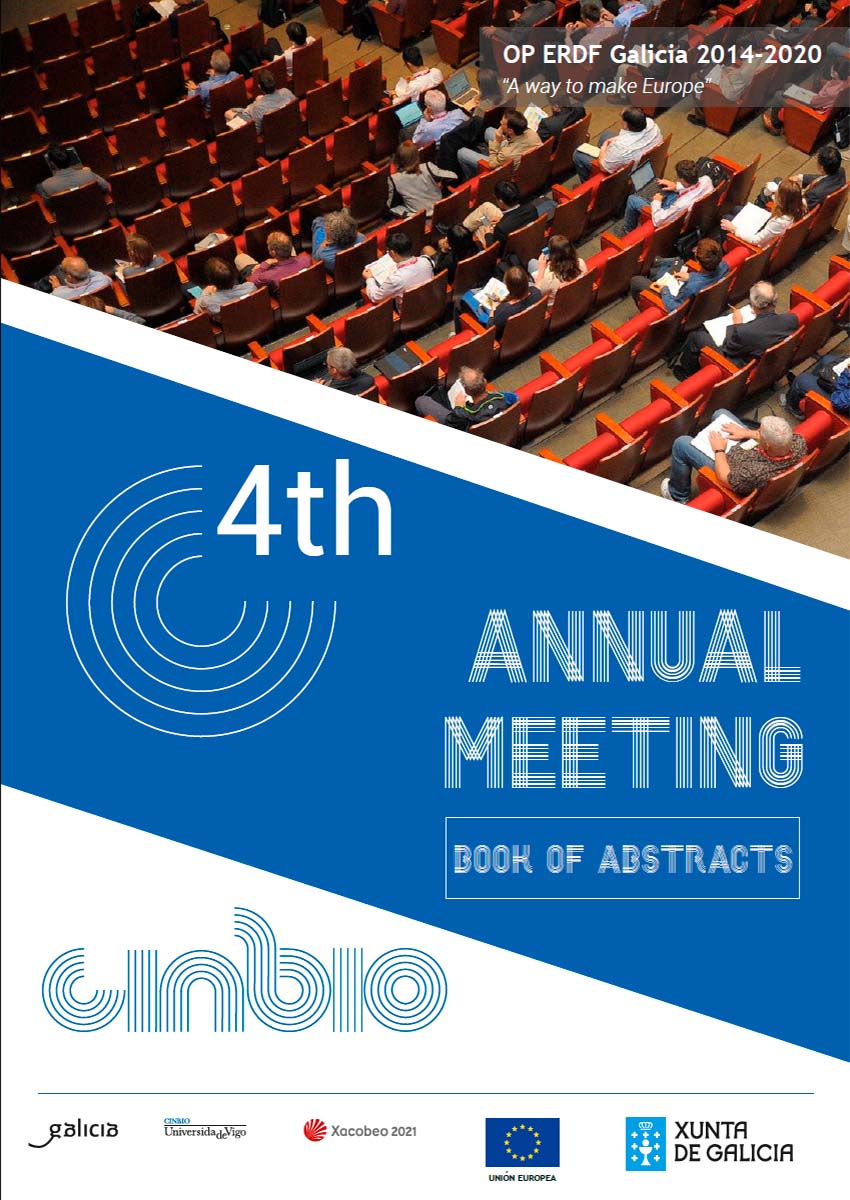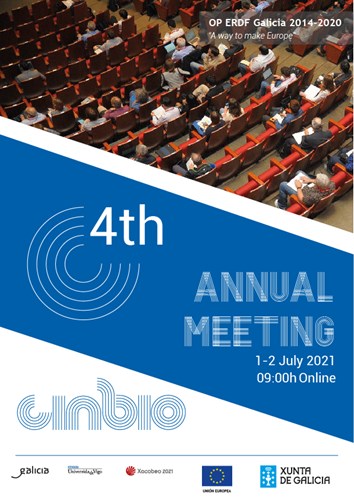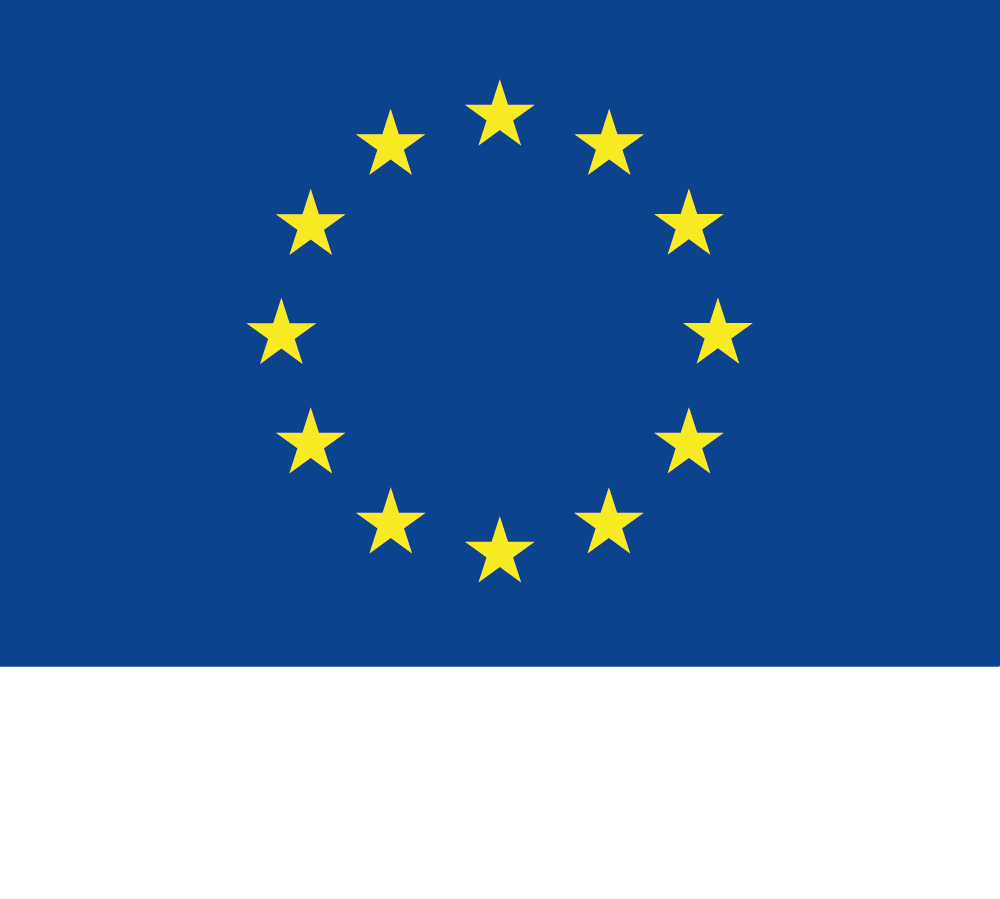THANK YOU FOR YOUR ATTENDANCE
WE WILL BE BACK NEXT YEAR
CINBIO'S 4TH ANNUAL MEETING
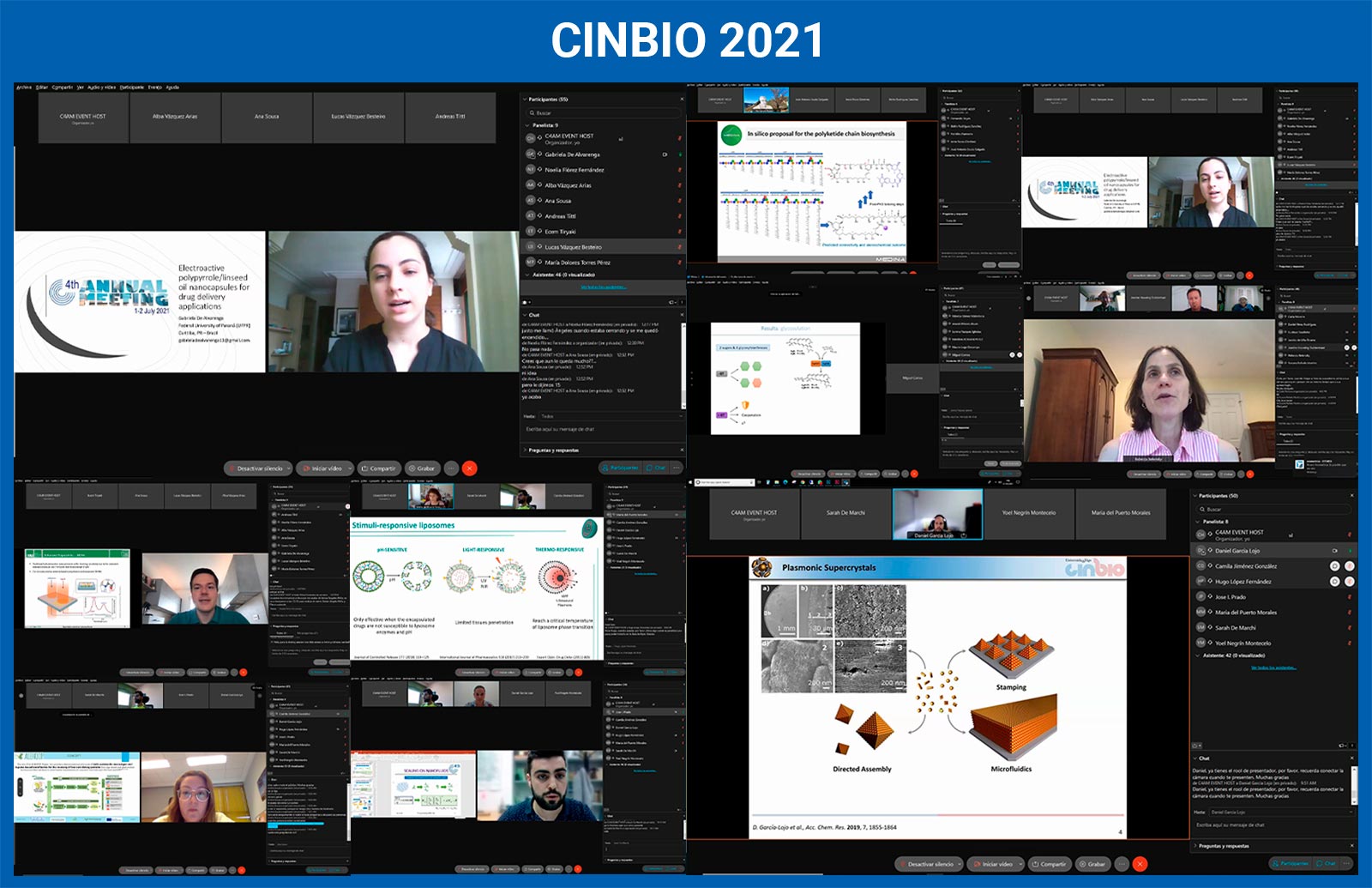


The winners of the CINBIO’s 4th annual meeting were:
Gabriela Alvarenga Tonet – Oral Communication
Roberto del Amparo Temporao – Poster
Award given by:
Miguel A. Correa Duarte (CINBIO’s Director) and Lorena Vázquez Iglesias (representing the Annual Meeting organizing and scientific comitee)
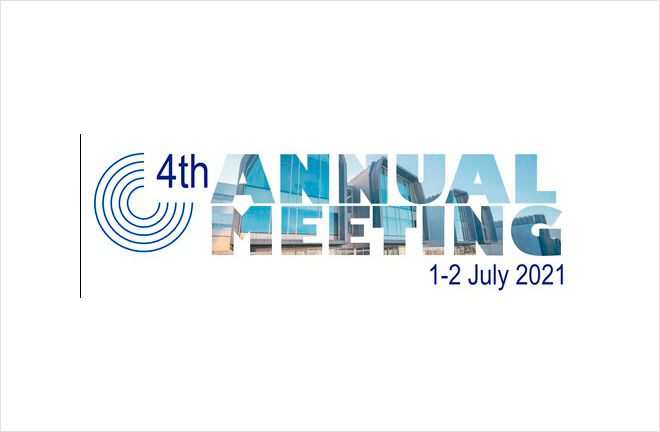
Biomedical Research Center (CINBIO), launched in 2009 to promote the collaboration with local hospitals and biomedical industry, organizes its 4th Annual Meeting (online, 1-2 July 2021). Organized by the CINBIO postdocs, the 4th CINBIO Annual Meeting seeks to bring together researchers interested in medicine, biology, chemistry, physics, mathematics and information technology, being the CINBIO’s interdisciplinary nature.
Being aware of world-wide situation due to the COVID-19 disease, at present, we decided to move from Science Faculty of the University of Vigo to a fully interactive online conference platform.
4th Annual Meeting
We would like to reflect our multidisciplinary expertise, with international and national invited speakers that reflect the character of our Research Centre; experts from Cancer, Nanomaterials, Bioinformatics, Biostatistics, Immunology, Chemical Synthesis, and other disciplines addressed by our center.
We would like to open creative discussion about Novel Tools for the Medicine of the Future. Therefore, we encourage both academics and students to participate and take this opportunity to share and discuss your results.
The conference will be free of charge for presenters and attendees.
INVITED SPEAKERS
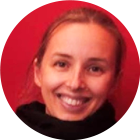
Belén Rodríguez Sánchez
Afiliación
Servicio de Microbiología Clínica y Enfermedades Infecciosas Hospital Gregorio Marañón, Madrid
Título:
MALDI-TOF Mass Spectrometry and Machine Learning. Applications in Clinical Microbiology
Abstract:
MALDI-TOF Mass Spectrometry has become an essential identification tool in the clinical microbiology laboratories over the last decades. It has replaced many conventional identification methods based on biochemical tests, that are no longer in use due to the use-friendliness, reliability and cost-effectiveness of MALDI-TOF. Most bacterial species can be easily identified from the colonies grown overnight on agar plates. Yeasts and fungal species are becoming easier to identify by MALDI-TOF thanks to the improvement of the available databases and the sample preparation procedures. Besides, direct identification of pathogens from clinical samples (blood cultures, urine or cerebrospinal fluid) has been demonstrated to be a clinically impacting application of MALDI-TOF since the identification of microorganisms can be achieved in an early manner, allowing the streamlining of optimal antibiotic treatment. The detection of resistant mechanisms (beta-lactamases, carbapenemases) almost simultaneously to the identification of the host microorganisms has been another important milestone of MALDI-TOF, showing that the information contained in the protein spectra can provide much more information than the mere name of the microorganism analysed.
Our MALDI-TOF-based research group has initiated collaborations with bioinformaticians and biomedicine engineers in order to classify MALDI-TOF protein spectra according to the presence of antibiotic/antifungal resistance mechanisms, the sequence type (ST) or the serotype/ribotype they belong to or their connection with hospital outbreaks. The algorithms applied so far have allowed the correct classification of azole-resistant Aspergillus fumigatus, vancomycin-resistant Enteroccocus faecium or high-risk clones of Pseudomonas aeruginosa. Some of our studies are still in a preliminary stage, but the robustness of the results shows that MALDI-TOF is a promising tool for rapid screening of clinically important strains.

Fernando Reyes
Afiliación
Fundación MEDINA, Granada, Spain
Título:
Structural elucidation of complex natural products assisted by biosynthetic gene cluster analysis
Abstract:
Natural products frequently possess complex structures, including multiple chiral centers, that make their structural elucidation a challenging task requiring the use of many different spectroscopic approaches and computational techniques. Different structural classes may need the use of different strategies and in general a combination of several spectroscopic and chiroptical techniques, chemical derivatization, degradation reactions, and molecular modelling are used to solve the full structure and absolute configuration of complex molecules.
The latest developments in next generation sequencing technologies have facilitated an enormous breakthrough in whole genome sequencing of microbial strains in the last decade, transforming it nowadays in a fast and affordable process. Bioinformatics tools have also been developed in parallel to mine the biosynthetic potential of the sequenced genomes and, among others, they allow to predict the absolute configuration of most chiral centers in a wide range of natural products encoded by the different biosynthetic gene clusters (BGCs). The combined use of those predictions with NMR analysis has become a very efficient and powerful approach to establish the full absolute configuration of complex natural products, especially in the case of polyketides, non-ribosomal peptides, and RiPPs. In these structural classes, the configuration of chiral centers predicted by BGC analysis is usually confirmed and complemented with that determined by NMR for other chiral centers that might be present in the molecule, originated from post-translational tailoring steps.
This combination of NMR and BGC analysis has been successfully applied in our laboratory over the last years and my talk will present a few recent cases where BGC analysis has been succesfylly used in combination with traditional structural elucidation approaches to solve the structure of complex actinomycete natural products, including polyketides and RIPPs.

Andreas Tittl
Afiliación
Chair in Hybrid Nanosystems, Nanoinstitute Munich,
Ludwig-Maximilians-Universität München, Germany
Título:
Spectrally selective metasurfaces for molecular biospectroscopy and sensing
Abstract:
All-dielectric resonators have emerged as a powerful toolkit for controlling light on the nanoscale, providing significant advantages over their plasmonic counterparts. In an effort to push all-dielectric nanophotonics even further, new physical concepts based bound states in the continuum (BICs) have recently been introduced to realize optical metasurfaces with unprecedented spectral control over the nanophotonic enhancement.
In my talk, I will introduce several examples of such spectrally selective metasurfaces and highlight how they can provide new insights for bio-nanophotonics, covering a wide range of applications from lipid membrane and vesicular processes to the detection of antibodies and biomarkers for disease.

Marina Ronamí Pérez
Afiliación
instituto de agroquímica y tecnología de alimentos (IATA-CSIC) https://innobiome.csic.es/
Título:
The microbiota and the gut-brain axis in the control of energy homeostasis
Abstract:
Obesity currently represents a major societal and health challenge worldwide. Its prevalence has reached epidemic proportions and trends continue to rise, reflecting the need for more effective preventive measures. Also its comorbidities such as type 2 diabetes (T2D) and cardiovascular diseases greatly impair the quality of life and involve considerable socioeconomic pressures on the individual and global health economies.
In recent years, obesity research has made an important progress on the identification of molecular signalling pathways involve in the meal-related communication between the gastrointestinal tract and the brain. This evidence helps to advance in the design of anti-obesity strategies targeting the gut-to-brain nutrient signalling, whose malfunction contributes to obesity.
Gut microbiota–diet interactions might interfere in nutrient sensing and signalling from the gut to the brain, where the information is processed to control energy homeostasis. This gut microbiota–brain crosstalk is mediated by metabolites, mainly short chain fatty acids, secondary bile acids or amino acids-derived metabolites and subcellular bacterial components. Accordingly, strategies based on the modification of the gut microbiota composition to beneficially modulate the gut-brain communication are now conceived as potential approaches for combat obesity and its comorbidities.
Our research is focused on the identification of human intestinal bacteria capable of improving the metabolic health through the modulation of the immune, endocrine and neural intestinal signalling pathways mediating the gut-brain axis functionality. With the final aim of developing efficient next generation of probiotics (NGP) for metabolic diseases, here, we illustrate the process for designing microbiome-based strategies and we show some examples with potential clinical use.
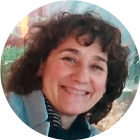
María del Puerto Morales
Afiliación
Instituto de Ciencia de Materiales de Madrid del Consejo Superior de Investigaciones Científicas (ICMM/CSIC)
Título:
Controlling local temperature at the magnetic nanoparticle surface for improving bio and catalytic efficiency
Abstract:
Magnetic hyperthermia emerged as a valuable alternative for some kind of cancers difficult to remove surgically, such as some brain tumours, but the number of approved products and their clinical performance are still modest. Some of the main drawbacks that this therapy faces are the lack of effective accumulation of nanoparticles at the tumour site after intravenous injection, the alteration of the heating due to nanoparticle agglomeration in lysosomes after cell uptake and the uncertainty on the temperature at the nanoscale.
Several strategies will be proposed in this talk about the development of more efficient magnetic nanoagents able to overcome these difficulties by maximizing the heating at low dose, and/or on the design of chemical modification of the nanoagent surface to increase its retention within the tumour extracellular matrix, binding them to the cell membrane or increasing the cell internalization. Finally, the progress on controlling the temperature at the nanoscale on the nanoparticle surface allows to expand the use of these nanoparticles in other applications such as nanoheaters and enzyme supporters to achieve simultaneous or sequential control of multienzymatic bioprocesses of industrial interest.

Monica Gómez Malmierca
Afiliación
Dpto. Biología Funcional, Área Microbiología. Universidad de Oviedo. Asturias. España.
Título:
Discovery and combinatorial biosynthesis of sipanmycins: a new family of glycosylated macrolactams.
Abstract:
The rapid emergence of infectious diseases and multi-resistant pathogens and the need for more effective chemotherapeutics has risen the necessity for new bioactive compounds, thus novel strategies have to be developed to find them. Actinomycetes isolated in symbiosis with insects have attracted attention in recent years as producers of metabolites with important bioactivities. Many of these bioactive natural products are glycosylated compounds in which the sugar components usually participate in interaction and molecular recognition of the cellular target. Therefore, the presence of sugar moieties is important, in some cases essential, for bioactivity. The great majority of these sugar moieties belong to the 6-deoxyhexoses and share two common biosynthetic steps catalyzed by a NDP-D-glucose synthase and a NDP-D-glucose-4,6-dehydratase 4,6DH.
Here we described the genome mining strategy to search for novel glycosylated compounds in a collection of Streptomyces strains isolated from the surface of leaf-cutting ants of the Tribe Attini. As a result, we discovered the sipanmycin family, a group of macrolactam disaccharyl glycosides that exerts antibiotic and cytotoxic activities. Also, we characterized the gene cluster responsible for their biosynthesis (sip cluster) in Streptomyces sp. CS149 and the steps involved in the glycosylation of the final compounds were unraveled.
Finally, we reported the generation of several sipanmycin analogues with different deoxysugars by introducing plasmids leading to the biosynthesis of various nucleotide-activated sugars. In addition, modifications in the macrolactam ring were introduced by mutasynthesis approaches, substituting the 3-aminobutanoic acid (derived from β-glutamic) acid naturally used as starter unit in the native sipanmycin biosynthesis pathway by 3-aminopentanoic acid.
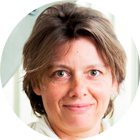
Jeanine Houwing-Duistermaat
Afiliación
Department of Statistics, University of Leeds, UK
Department of Statistics, University of Bologna, Italy
Department of Biostatistics and Data Science, University Medical Center Utrecht, The Netherlands.
Título:
Probabilistic partial least squares methods for data integration
Abstract:
Many studies collect multiple omics datasets to gather novel insights about different stages of biological processes. For joint modelling of these datasets, several data integration methods have been developed. These methods address high dimensionality, within and across datasets correlation, and the presence of heterogeneity among datasets due to representing different biological processes and using different measurement technologies. Most methods, neither provide statistical evidence for a relationship between the datasets nor identify relevant variables that contribute to this relationship.
We propose a probabilistic latent variable modelling framework for inferring the relationship between two omics datasets. These methods reduce dimensionality and capture correlations by forming components that are linear combinations of the variables. The correlation structure is modelled by joint and data specific components. We propose maximum likelihood estimation of the parameters and formulate a test statistic for the null hypothesis of no relationship.
We evaluate our methods via simulations. Under the null hypothesis, the test statistic appears to approximately follow the normal distribution for sample size larger than 500. Our method outperforms existing methods for small and heterogeneous datasets in terms of selecting relevant variables and prediction accuracy. We illustrate the methods by analysing omics datasets from various studies.
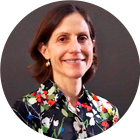
Rebecca Betensky
Afiliación
Department of Biostatistics – School of Global Public Health – New York University
Título:
Reconsideration of the Kaplan-Meier Estimator: Censoring and Time-varying Covariates
Abstract:
In this talk I will present two extensions of the Kaplan-Meier estimator that address a nuance of censoring and incorporation of time-varying covariates.
Clinical studies with time to event endpoints typically report the median follow-up (i.e., censoring) time for the subjects in the trial, alongside the median time to event. The reason for this is to provide information about the opportunity for subjects in the study to experience the event of interest. In most clinical studies, the censoring time is a composite measure, defined as the minimum of the time to drop-out from the study and time to the administrative end of study. The time to drop-out component may or may not be observed, while the time to the end of study is observed for each subject. I consider whether this decomposition of the censoring time into a time that is itself potentially censored and a time that is fully observed offers any improvement of the estimation of the censoring distribution.
Extensions of the Kaplan-Meier estimator have been developed to illustrate the relationship between a time-varying covariate of interest and survival, however they are limited to displaying survival for patients who always have a certain value of a time-varying covariate. I present extensions of these estimators that provide crude and covariate-adjusted estimates of the survival function for patients defined by covariate paths.
ORGANIZING COMITTE:

Noelia Flórez Fernández
EQ2, Biomass and Sustainable Development

Sergio Gómez Graña
FunNanoBio Functional NanoBioMaterials

Hugo López Fernandez
SI4 Next Generation Computer Systems Group

Fátima Otero Dios
Management Unit, CINBIO

Ana Sousa Castillo
TNT Team Nanotech

María Dolores Torres Pérez
EQ2 Biomass and Sustainable Development
SCIENTIFIC COMMITTE:

Noelia Flórez Fernández
EQ2, Biomass and Sustainable Development

Sergio Gómez Graña
FunNanoBio Functional NanoBioMaterials

Hugo López Fernandez
SI4 Next Generation Computer Systems Group

Ana Sousa Castillo
TNT Team Nanotech

José Antonio Souto Salgado
QO1 Organic Chemistry

María Dolores Torres Pérez
EQ2 Biomass and Sustainable Development
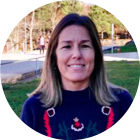
Lorena Vázquez Iglesias
FunNanoBio Functional NanoBioMaterials

Sarah de Marchi Lourenço
FunNanoBio Functional NanoBioMaterials
THANK YOU FOR YOUR ATTENDANCE
WE WILL BE BACK NEXT YEAR
CINBIO'S 4TH ANNUAL MEETING

The winners of the CINBIO’s 4th annual meeting were:
Gabriela Alvarenga Tonet – Oral Communication
Roberto del Amparo Temporao – Poster
Award given by:
Miguel A. Correa Duarte (CINBIO’s Director) and Lorena Vázquez Iglesias (representing the Annual Meeting organizing and scientific comitee)



Biomedical Research Center (CINBIO), launched in 2009 to promote the collaboration with local hospitals and biomedical industry, organizes its 4th Annual Meeting (online, 1-2 July 2021). Organized by the CINBIO postdocs, the 4th CINBIO Annual Meeting seeks to bring together researchers interested in medicine, biology, chemistry, physics, mathematics and information technology, being the CINBIO’s interdisciplinary nature.
Being aware of world-wide situation due to the COVID-19 disease, at present, we decided to move from Science Faculty of the University of Vigo to a fully interactive online conference platform.
4th Annual Meeting
We would like to reflect our multidisciplinary expertise, with international and national invited speakers that reflect the character of our Research Centre; experts from Cancer, Nanomaterials, Bioinformatics, Biostatistics, Immunology, Chemical Synthesis, and other disciplines addressed by our center.
We would like to open creative discussion about Novel Tools for the Medicine of the Future. Therefore, we encourage both academics and students to participate and take this opportunity to share and discuss your results.
The conference will be free of charge for presenters and attendees.
INVITED SPEAKERS

Belén Rodríguez Sánchez
Afiliación
Servicio de Microbiología Clínica y Enfermedades Infecciosas Hospital Gregorio Marañón, Madrid
Título:
MALDI-TOF Mass Spectrometry and Machine Learning. Applications in Clinical Microbiology
Abstract:
MALDI-TOF Mass Spectrometry has become an essential identification tool in the clinical microbiology laboratories over the last decades. It has replaced many conventional identification methods based on biochemical tests, that are no longer in use due to the use-friendliness, reliability and cost-effectiveness of MALDI-TOF. Most bacterial species can be easily identified from the colonies grown overnight on agar plates. Yeasts and fungal species are becoming easier to identify by MALDI-TOF thanks to the improvement of the available databases and the sample preparation procedures. Besides, direct identification of pathogens from clinical samples (blood cultures, urine or cerebrospinal fluid) has been demonstrated to be a clinically impacting application of MALDI-TOF since the identification of microorganisms can be achieved in an early manner, allowing the streamlining of optimal antibiotic treatment. The detection of resistant mechanisms (beta-lactamases, carbapenemases) almost simultaneously to the identification of the host microorganisms has been another important milestone of MALDI-TOF, showing that the information contained in the protein spectra can provide much more information than the mere name of the microorganism analysed.
Our MALDI-TOF-based research group has initiated collaborations with bioinformaticians and biomedicine engineers in order to classify MALDI-TOF protein spectra according to the presence of antibiotic/antifungal resistance mechanisms, the sequence type (ST) or the serotype/ribotype they belong to or their connection with hospital outbreaks. The algorithms applied so far have allowed the correct classification of azole-resistant Aspergillus fumigatus, vancomycin-resistant Enteroccocus faecium or high-risk clones of Pseudomonas aeruginosa. Some of our studies are still in a preliminary stage, but the robustness of the results shows that MALDI-TOF is a promising tool for rapid screening of clinically important strains.

Fernando Reyes
Afiliación
Fundación MEDINA, Granada, Spain
Título:
Structural elucidation of complex natural products assisted by biosynthetic gene cluster analysis
Abstract:
Natural products frequently possess complex structures, including multiple chiral centers, that make their structural elucidation a challenging task requiring the use of many different spectroscopic approaches and computational techniques. Different structural classes may need the use of different strategies and in general a combination of several spectroscopic and chiroptical techniques, chemical derivatization, degradation reactions, and molecular modelling are used to solve the full structure and absolute configuration of complex molecules.
The latest developments in next generation sequencing technologies have facilitated an enormous breakthrough in whole genome sequencing of microbial strains in the last decade, transforming it nowadays in a fast and affordable process. Bioinformatics tools have also been developed in parallel to mine the biosynthetic potential of the sequenced genomes and, among others, they allow to predict the absolute configuration of most chiral centers in a wide range of natural products encoded by the different biosynthetic gene clusters (BGCs). The combined use of those predictions with NMR analysis has become a very efficient and powerful approach to establish the full absolute configuration of complex natural products, especially in the case of polyketides, non-ribosomal peptides, and RiPPs. In these structural classes, the configuration of chiral centers predicted by BGC analysis is usually confirmed and complemented with that determined by NMR for other chiral centers that might be present in the molecule, originated from post-translational tailoring steps.
This combination of NMR and BGC analysis has been successfully applied in our laboratory over the last years and my talk will present a few recent cases where BGC analysis has been succesfylly used in combination with traditional structural elucidation approaches to solve the structure of complex actinomycete natural products, including polyketides and RIPPs.

Andreas Tittl
Afiliación
Chair in Hybrid Nanosystems, Nanoinstitute Munich,
Ludwig-Maximilians-Universität München, Germany
Título:
Spectrally selective metasurfaces for molecular biospectroscopy and sensing
Abstract:
All-dielectric resonators have emerged as a powerful toolkit for controlling light on the nanoscale, providing significant advantages over their plasmonic counterparts. In an effort to push all-dielectric nanophotonics even further, new physical concepts based bound states in the continuum (BICs) have recently been introduced to realize optical metasurfaces with unprecedented spectral control over the nanophotonic enhancement.
In my talk, I will introduce several examples of such spectrally selective metasurfaces and highlight how they can provide new insights for bio-nanophotonics, covering a wide range of applications from lipid membrane and vesicular processes to the detection of antibodies and biomarkers for disease.

Marina Ronamí Pérez
Afiliación
instituto de agroquímica y tecnología de alimentos (IATA-CSIC) https://innobiome.csic.es/
Título:
The microbiota and the gut-brain axis in the control of energy homeostasis
Abstract:
Obesity currently represents a major societal and health challenge worldwide. Its prevalence has reached epidemic proportions and trends continue to rise, reflecting the need for more effective preventive measures. Also its comorbidities such as type 2 diabetes (T2D) and cardiovascular diseases greatly impair the quality of life and involve considerable socioeconomic pressures on the individual and global health economies.
In recent years, obesity research has made an important progress on the identification of molecular signalling pathways involve in the meal-related communication between the gastrointestinal tract and the brain. This evidence helps to advance in the design of anti-obesity strategies targeting the gut-to-brain nutrient signalling, whose malfunction contributes to obesity.
Gut microbiota–diet interactions might interfere in nutrient sensing and signalling from the gut to the brain, where the information is processed to control energy homeostasis. This gut microbiota–brain crosstalk is mediated by metabolites, mainly short chain fatty acids, secondary bile acids or amino acids-derived metabolites and subcellular bacterial components. Accordingly, strategies based on the modification of the gut microbiota composition to beneficially modulate the gut-brain communication are now conceived as potential approaches for combat obesity and its comorbidities.
Our research is focused on the identification of human intestinal bacteria capable of improving the metabolic health through the modulation of the immune, endocrine and neural intestinal signalling pathways mediating the gut-brain axis functionality. With the final aim of developing efficient next generation of probiotics (NGP) for metabolic diseases, here, we illustrate the process for designing microbiome-based strategies and we show some examples with potential clinical use.

María del Puerto Morales
Afiliación
Instituto de Ciencia de Materiales de Madrid del Consejo Superior de Investigaciones Científicas (ICMM/CSIC)
Título:
Controlling local temperature at the magnetic nanoparticle surface for improving bio and catalytic efficiency
Abstract:
Magnetic hyperthermia emerged as a valuable alternative for some kind of cancers difficult to remove surgically, such as some brain tumours, but the number of approved products and their clinical performance are still modest. Some of the main drawbacks that this therapy faces are the lack of effective accumulation of nanoparticles at the tumour site after intravenous injection, the alteration of the heating due to nanoparticle agglomeration in lysosomes after cell uptake and the uncertainty on the temperature at the nanoscale.
Several strategies will be proposed in this talk about the development of more efficient magnetic nanoagents able to overcome these difficulties by maximizing the heating at low dose, and/or on the design of chemical modification of the nanoagent surface to increase its retention within the tumour extracellular matrix, binding them to the cell membrane or increasing the cell internalization. Finally, the progress on controlling the temperature at the nanoscale on the nanoparticle surface allows to expand the use of these nanoparticles in other applications such as nanoheaters and enzyme supporters to achieve simultaneous or sequential control of multienzymatic bioprocesses of industrial interest.

Monica Gómez Malmierca
Afiliación
Dpto. Biología Funcional, Área Microbiología. Universidad de Oviedo. Asturias. España.
Título:
Discovery and combinatorial biosynthesis of sipanmycins: a new family of glycosylated macrolactams.
Abstract:
The rapid emergence of infectious diseases and multi-resistant pathogens and the need for more effective chemotherapeutics has risen the necessity for new bioactive compounds, thus novel strategies have to be developed to find them. Actinomycetes isolated in symbiosis with insects have attracted attention in recent years as producers of metabolites with important bioactivities. Many of these bioactive natural products are glycosylated compounds in which the sugar components usually participate in interaction and molecular recognition of the cellular target. Therefore, the presence of sugar moieties is important, in some cases essential, for bioactivity. The great majority of these sugar moieties belong to the 6-deoxyhexoses and share two common biosynthetic steps catalyzed by a NDP-D-glucose synthase and a NDP-D-glucose-4,6-dehydratase 4,6DH.
Here we described the genome mining strategy to search for novel glycosylated compounds in a collection of Streptomyces strains isolated from the surface of leaf-cutting ants of the Tribe Attini. As a result, we discovered the sipanmycin family, a group of macrolactam disaccharyl glycosides that exerts antibiotic and cytotoxic activities. Also, we characterized the gene cluster responsible for their biosynthesis (sip cluster) in Streptomyces sp. CS149 and the steps involved in the glycosylation of the final compounds were unraveled.
Finally, we reported the generation of several sipanmycin analogues with different deoxysugars by introducing plasmids leading to the biosynthesis of various nucleotide-activated sugars. In addition, modifications in the macrolactam ring were introduced by mutasynthesis approaches, substituting the 3-aminobutanoic acid (derived from β-glutamic) acid naturally used as starter unit in the native sipanmycin biosynthesis pathway by 3-aminopentanoic acid.

Jeanine Houwing-Duistermaat
Afiliación
Department of Statistics, University of Leeds, UK
Department of Statistics, University of Bologna, Italy
Department of Biostatistics and Data Science, University Medical Center Utrecht, The Netherlands.
Título:
Probabilistic partial least squares methods for data integration
Abstract:
Many studies collect multiple omics datasets to gather novel insights about different stages of biological processes. For joint modelling of these datasets, several data integration methods have been developed. These methods address high dimensionality, within and across datasets correlation, and the presence of heterogeneity among datasets due to representing different biological processes and using different measurement technologies. Most methods, neither provide statistical evidence for a relationship between the datasets nor identify relevant variables that contribute to this relationship.
We propose a probabilistic latent variable modelling framework for inferring the relationship between two omics datasets. These methods reduce dimensionality and capture correlations by forming components that are linear combinations of the variables. The correlation structure is modelled by joint and data specific components. We propose maximum likelihood estimation of the parameters and formulate a test statistic for the null hypothesis of no relationship.
We evaluate our methods via simulations. Under the null hypothesis, the test statistic appears to approximately follow the normal distribution for sample size larger than 500. Our method outperforms existing methods for small and heterogeneous datasets in terms of selecting relevant variables and prediction accuracy. We illustrate the methods by analysing omics datasets from various studies.

Rebecca Betensky
Afiliación
Department of Biostatistics – School of Global Public Health – New York University
Título:
Reconsideration of the Kaplan-Meier Estimator: Censoring and Time-varying Covariates
Abstract:
In this talk I will present two extensions of the Kaplan-Meier estimator that address a nuance of censoring and incorporation of time-varying covariates.
Clinical studies with time to event endpoints typically report the median follow-up (i.e., censoring) time for the subjects in the trial, alongside the median time to event. The reason for this is to provide information about the opportunity for subjects in the study to experience the event of interest. In most clinical studies, the censoring time is a composite measure, defined as the minimum of the time to drop-out from the study and time to the administrative end of study. The time to drop-out component may or may not be observed, while the time to the end of study is observed for each subject. I consider whether this decomposition of the censoring time into a time that is itself potentially censored and a time that is fully observed offers any improvement of the estimation of the censoring distribution.
Extensions of the Kaplan-Meier estimator have been developed to illustrate the relationship between a time-varying covariate of interest and survival, however they are limited to displaying survival for patients who always have a certain value of a time-varying covariate. I present extensions of these estimators that provide crude and covariate-adjusted estimates of the survival function for patients defined by covariate paths.
ORGANIZING COMITTE:

Noelia Flórez Fernández
EQ2, Biomass and Sustainable Development

Sergio Gómez Graña
FunNanoBio Functional NanoBioMaterials

Hugo López Fernandez
SI4 Next Generation Computer Systems Group

Fátima Otero Dios
Management Unit, CINBIO

Ana Sousa Castillo
TNT Team Nanotech

María Dolores Torres Pérez
EQ2 Biomass and Sustainable Development
SCIENTIFIC COMMITTE:

Noelia Flórez Fernández
EQ2, Biomass and Sustainable Development

Sergio Gómez Graña
FunNanoBio Functional NanoBioMaterials

Hugo López Fernandez
SI4 Next Generation Computer Systems Group

Ana Sousa Castillo
TNT Team Nanotech

José Antonio Souto Salgado
QO1 Organic Chemistry

María Dolores Torres Pérez
EQ2 Biomass and Sustainable Development

Lorena Vázquez Iglesias
FunNanoBio Functional NanoBioMaterials

Sarah de Marchi Lourenço
FunNanoBio Functional NanoBioMaterials

